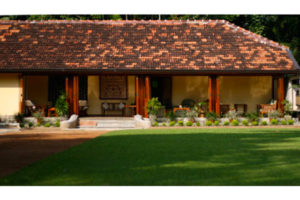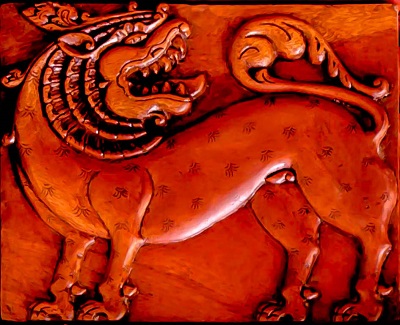“Our great, great, great, great, great, great grandfather.”
That will be one way we start talking about the history of our home.
Spanning at least eight generations, yet still remaining connected to its traditional roots and ancestry, Kirinda Walauwa is a home showcasing to guests a delicate local culture and values that risk being left behind in a modernizing and fast evolving country.
Even though each generation has renovated and has added modern conveniences for their comfort, it still has not lost its natural old charm. The essence of the structure endures and is faithful to its original architecture; a signature of which can be seen by the thickness of the walls-all built in solid stone and plastered in clay.
The house consists of large, airy rooms and a long verandah which opens out to the garden. From the boundary of the estate leading to the home is a well kept tarred driveway descending guests through a winding downhill ride with four hairpin bends and beautiful flowering foliage on either side of the road that playfully brushes their vehicle as it meanders along.

A sitting room, a dining room and a meda-midulla: three common indoor areas frequented by both guests and the host alike. The meda-midula (literally translating to ‘central garden’) is an open courtyard smack in the middle of the house. A practical and historical feature in Ceylon’s pre-electricity era, this common trait is prevalent in most of the old Walauwas and allows the morning sunlight to stream into the house illuminating the many nooks and crannies yearning for daylight. Or a breeze on a hot afternoon could make the whole house all the more comfortable just by the way the wind interacts with this architectural void. It also gives a touch of magic on a full moon night!
Adding to the historical references and insights that a few days’ stay at Kirinda Walauwa can give guests is the paddy threshing field, which is right next to the garden. In the days of yore, fields of rice belonging to the Walauwa were harvested and brought here for threshing. This encapsulates the old adage of ‘man reaps what he sows’; but unlike today where it is done by tractors, buffaloes were used to do this all through the night. A lively and festive occasion which progresses with a lot of singing, drinking, eating and story-telling. After the end of each season, paddy was collected and put into the barns rationed carefully to both trade as well as to consume until next harvest.
In those times, the two most respected institutes in a village were the temple and the Walauwa. The Walauwa helped the village with food for the body while the temple invested in food for the soul. Villagers earned their living by working in the Walauwa lands and paddy fields, they would often show up at the Walauwa if they needed help during an emergency or even just happen to wander in hoping to get a free meal and maybe some advice: both of which are readily dispensed.
The villagers depended on auspicious times for all important activities such as before embarking on a journey, a new venture or in certain household matters. There are many interesting tales of the past regarding the Walauwa: about their elephants and the lads who used to ride furiously on beautiful black horses over the hills and valleys and the present host Lalith – who is also the owner and a direct descendant – is more than happy to share some with eager guests.
With the dawn of the modern era in Sri Lanka, many of these ancestral mansions are fast perishing or have already been sold due to lack of funds as well as the unavailability of labour to maintain their vast acres of land, hence some of the owners are compelled to venture and create alternative arrangements for their preservation as they are a source of great archaeological and cultural value to the country.
